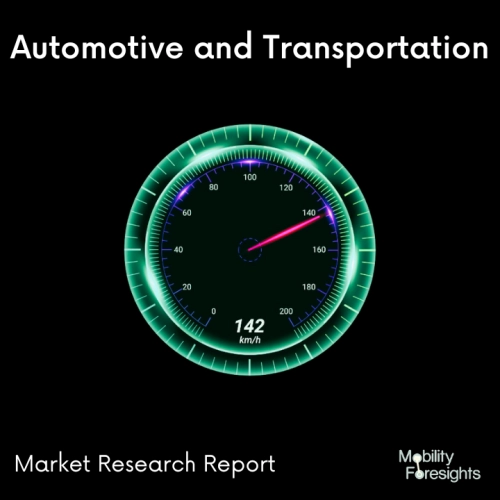
- Get in Touch with Us

Last Updated: Apr 25, 2025 | Study Period: 2024-2030
There are two types of Ev self-cleaning coatings for glass: hydrophobic and hydrophilic. Both of these coating types clean themselves with the help of water; the former does so by rolling droplets, while the latter does it by sheeting water that picks up dirt.
Titania-based hydrophilic coatings, however, have an extra capability that allows them to chemically degrade absorbed dirt under sunshine. A extremely high static water contact angleâoften reported as >160°âand a very low roll-off angle, or the lowest inclination angle required for a droplet to roll off the surface, are prerequisites for a self-cleaning hydrophobic surface.
With the use of moulded polymers and waxes, physical processing techniques like ion etching and compression of polymer beads, and chemical processing techniques like plasma-chemical roughening, it is possible to pattern hydrophobic surfaces in a variety of ways that can produce ultra-hydrophobic coatings.
Although these surfaces work well as self-cleaners, a number of issues limit their widespread use at the moment. Batch processing a hydrophobic material is a costly and time-consuming approach, and the coatings generated are frequently hazy, precluding usage on lenses and windows, and fragile materials.
The second category of self-cleaning surfaces consists of hydrophilic surfaces, which don't just rely on water flow to remove debris. When exposed to light, these coatings undergo a process known as photocatalysis that chemically dissolves grime.
The field is far from mature despite the commercialization of a hydrophilic self-cleaning coating in a variety of goods; studies into the basic self-cleaning mechanics and characterizations of novel coatings are frequently published in the primary literature.

The Global EV Self-cleaning coating market accounted for $XX Billion in 2022 and is anticipated to reach $XX Billion by 2030, registering a CAGR of XX% from 2024 to 2030.
IGL Coatings has launched Ecocoat Titan, a unique EV self-cleaning coating, as the newest member of its cleaning series. When triggered by light, the water-based photocatalytic coating uses titanium dioxide to provide surfaces with ongoing defence against dangerous infections.
Hospitals, public transit, elevators, dining establishments, and other heavy traffic areas are all breeding grounds for infections, but Ecocoat Titan actively cleaning and inhibits their growth.
Unlike to other photocatalytic coatings that are vulnerable to touch and normal wear and tear, Ecocoat Titan also eliminates offensive odours and VOCs from coated surfaces and is incredibly durable. Using patented self Activ-Tough technology, Titan keeps working even after repeated washing with soap-based cleaners or IPA, a potent solvent frequently present in hand sanitizers and known for quickly dissolving coatings.
In rigorous scrub testing, Titan holds up after 1,000 scrubs against IPA-based products like hand sanitizers with a 70% alcohol concentration and 10,000 scrubs against soap-based products like dishwashing soap or hand wash.
| Sl no | Topic |
| 1 | Market Segmentation |
| 2 | Scope of the report |
| 3 | Abbreviations |
| 4 | Research Methodology |
| 5 | Executive Summary |
| 6 | Introduction |
| 7 | Insights from Industry stakeholders |
| 8 | Cost breakdown of Product by sub-components and average profit margin |
| 9 | Disruptive innovation in the Industry |
| 10 | Technology trends in the Industry |
| 11 | Consumer trends in the industry |
| 12 | Recent Production Milestones |
| 13 | Component Manufacturing in US, EU and China |
| 14 | COVID-19 impact on overall market |
| 15 | COVID-19 impact on Production of components |
| 16 | COVID-19 impact on Point of sale |
| 17 | Market Segmentation, Dynamics and Forecast by Geography, 2024-2030 |
| 18 | Market Segmentation, Dynamics and Forecast by Product Type, 2024-2030 |
| 19 | Market Segmentation, Dynamics and Forecast by Application, 2024-2030 |
| 20 | Market Segmentation, Dynamics and Forecast by End use, 2024-2030 |
| 21 | Product installation rate by OEM, 2023 |
| 22 | Incline/Decline in Average B-2-B selling price in past 5 years |
| 23 | Competition from substitute products |
| 24 | Gross margin and average profitability of suppliers |
| 25 | New product development in past 12 months |
| 26 | M&A in past 12 months |
| 27 | Growth strategy of leading players |
| 28 | Market share of vendors, 2023 |
| 29 | Company Profiles |
| 30 | Unmet needs and opportunity for new suppliers |
| 31 | Conclusion |
| 32 | Appendix |